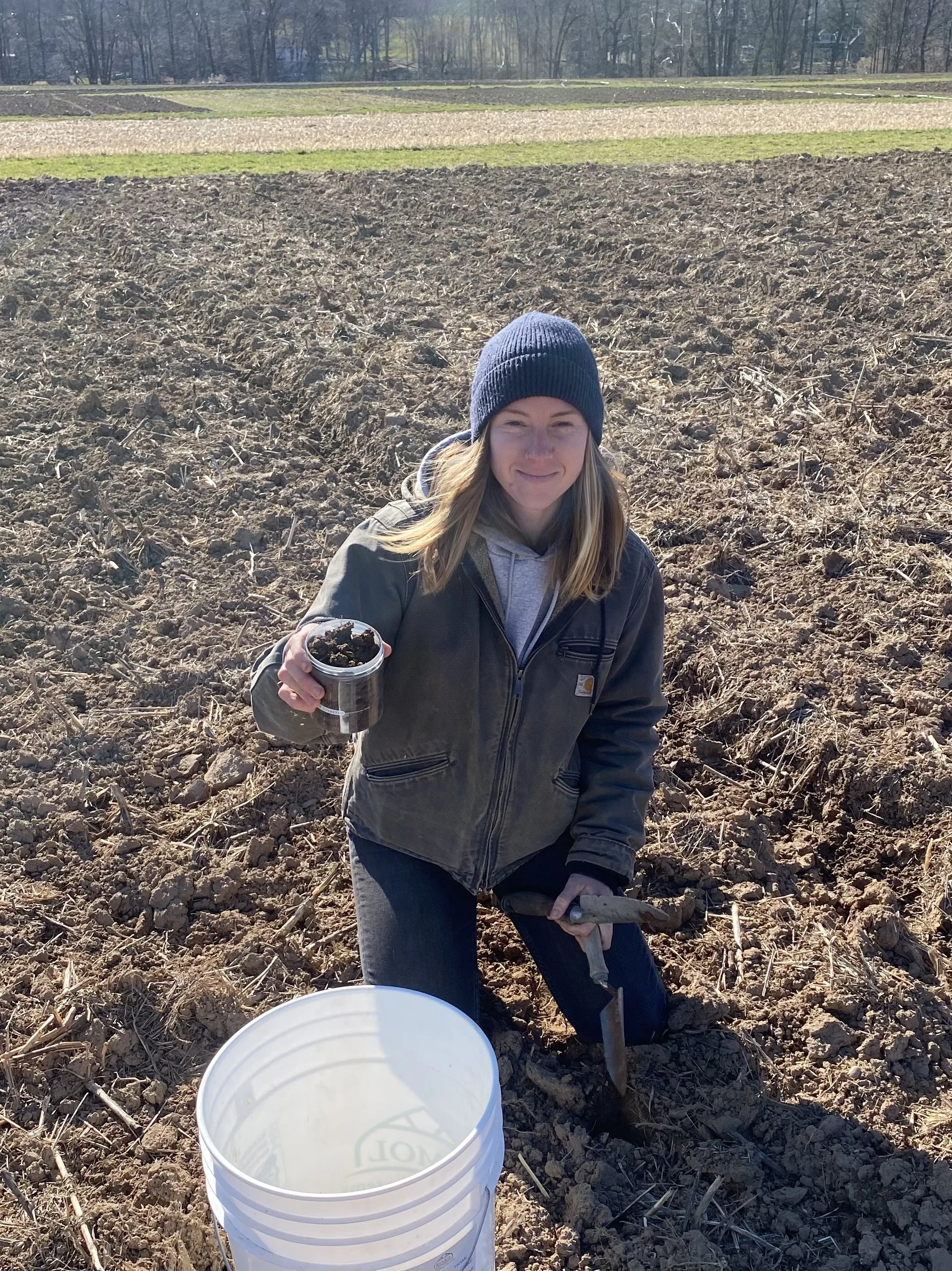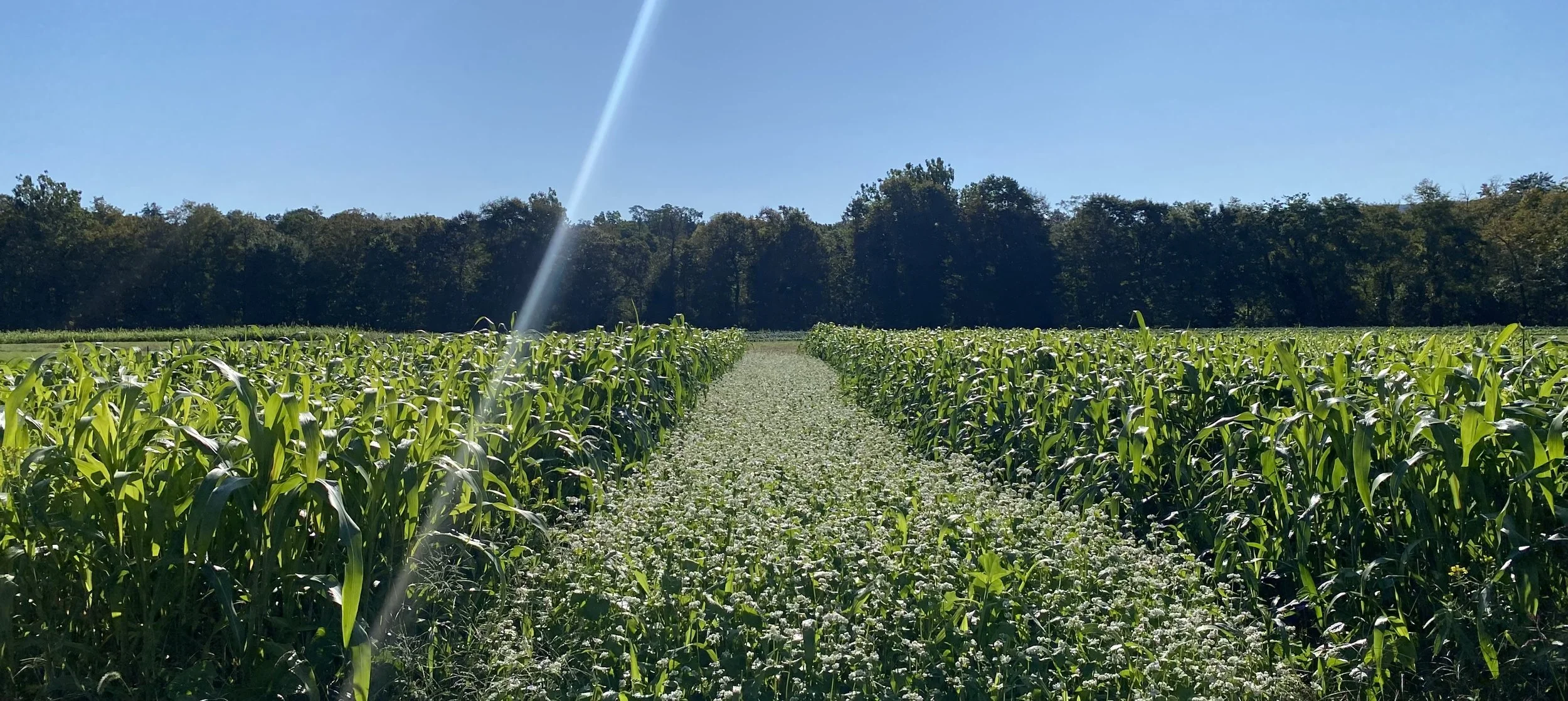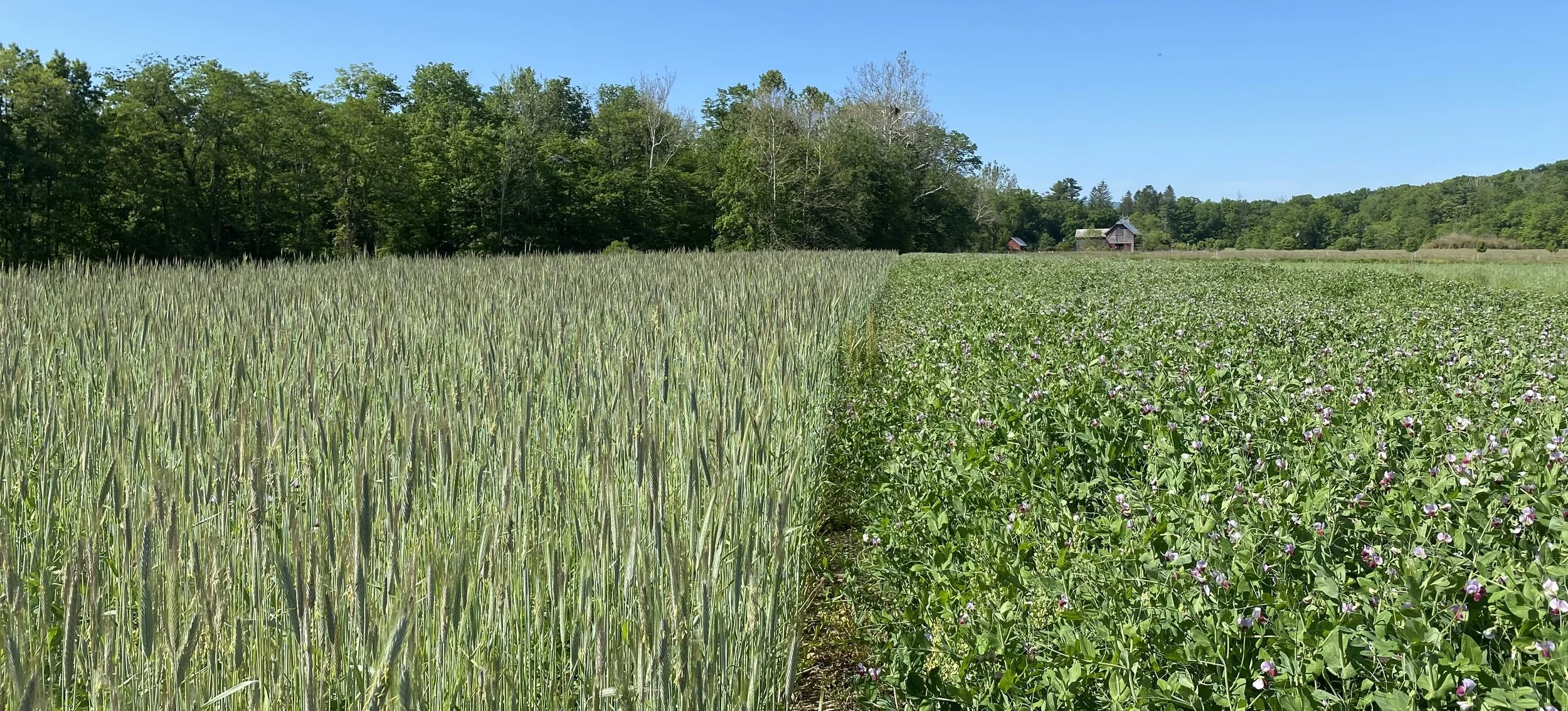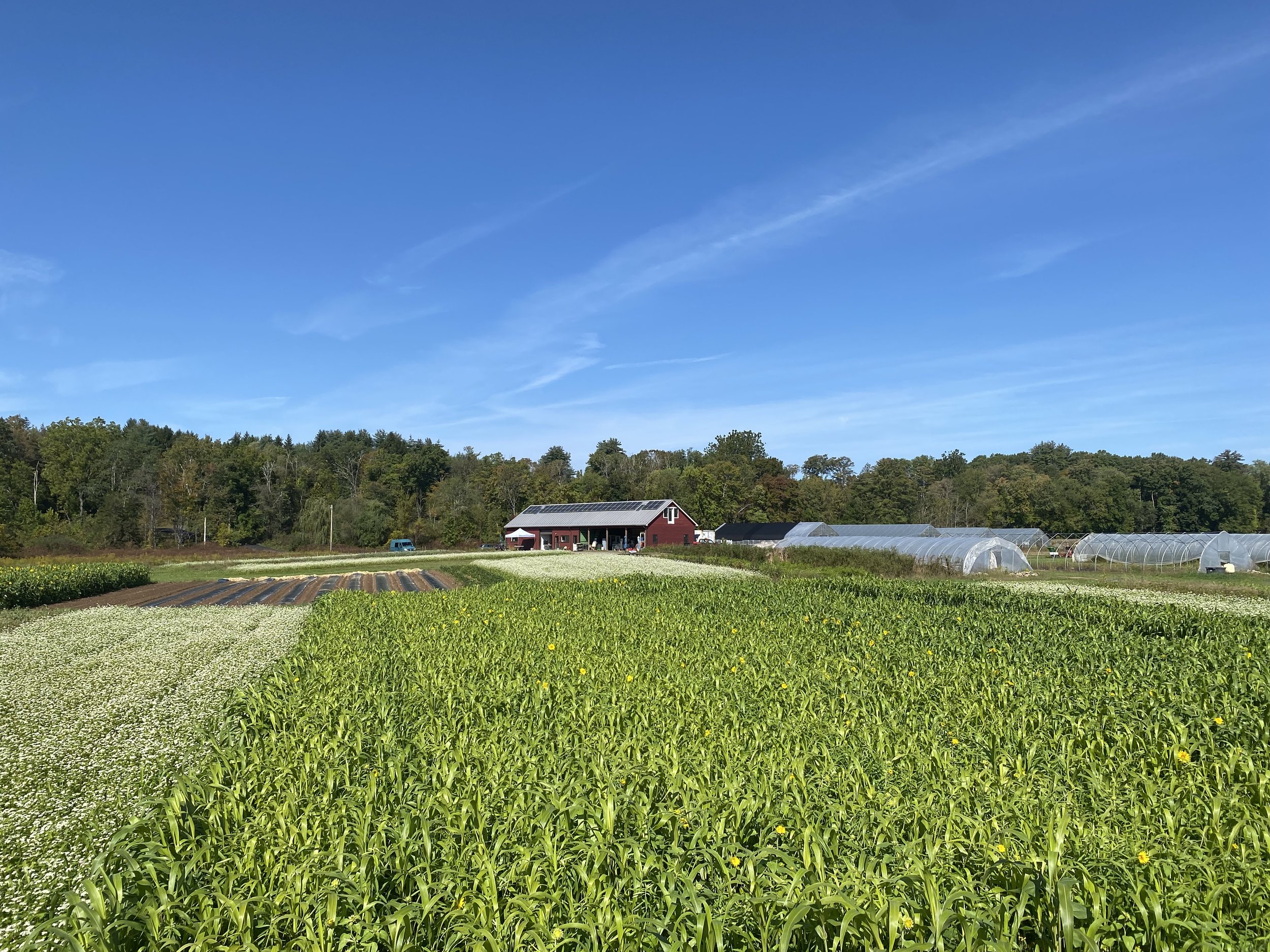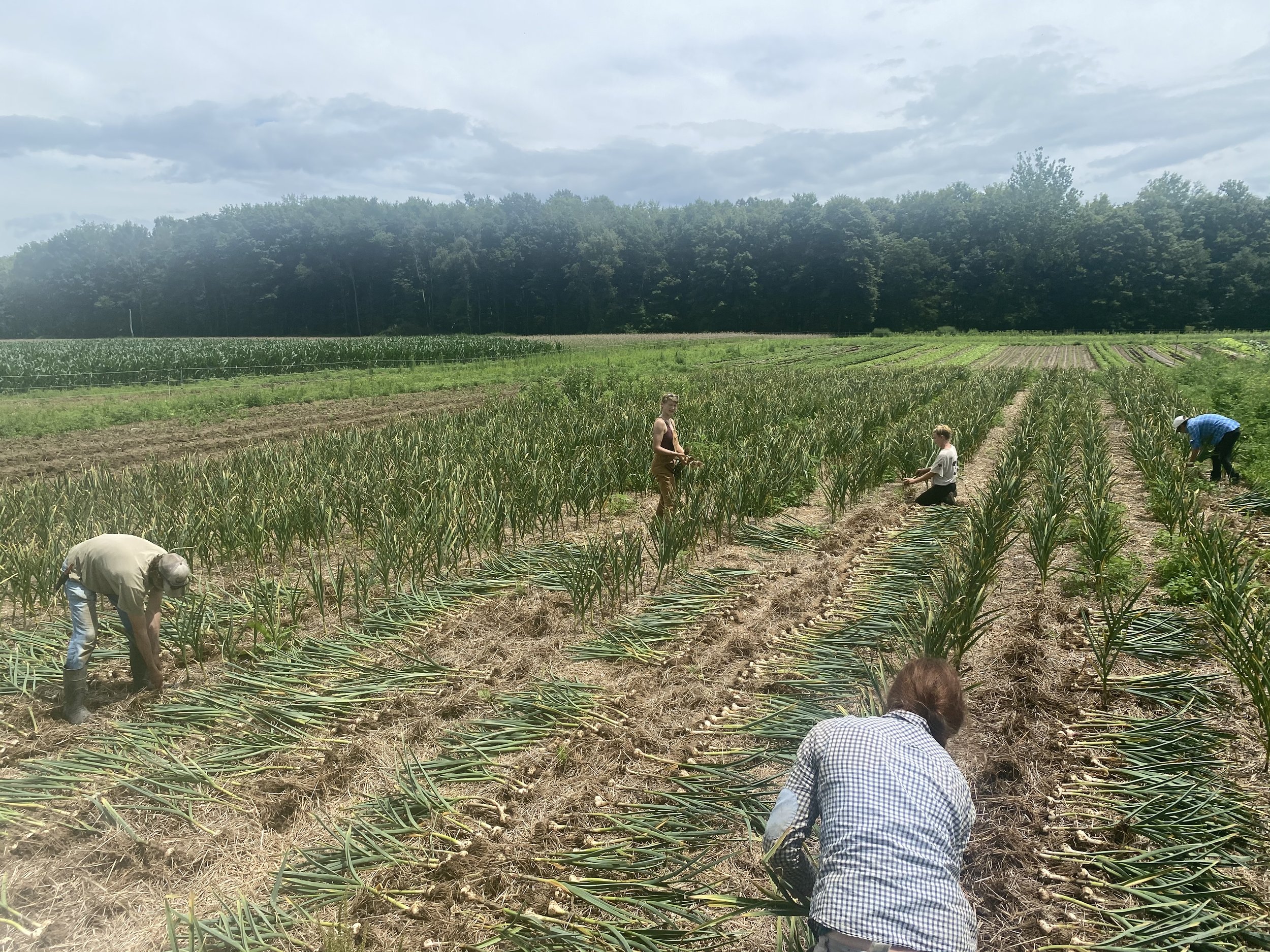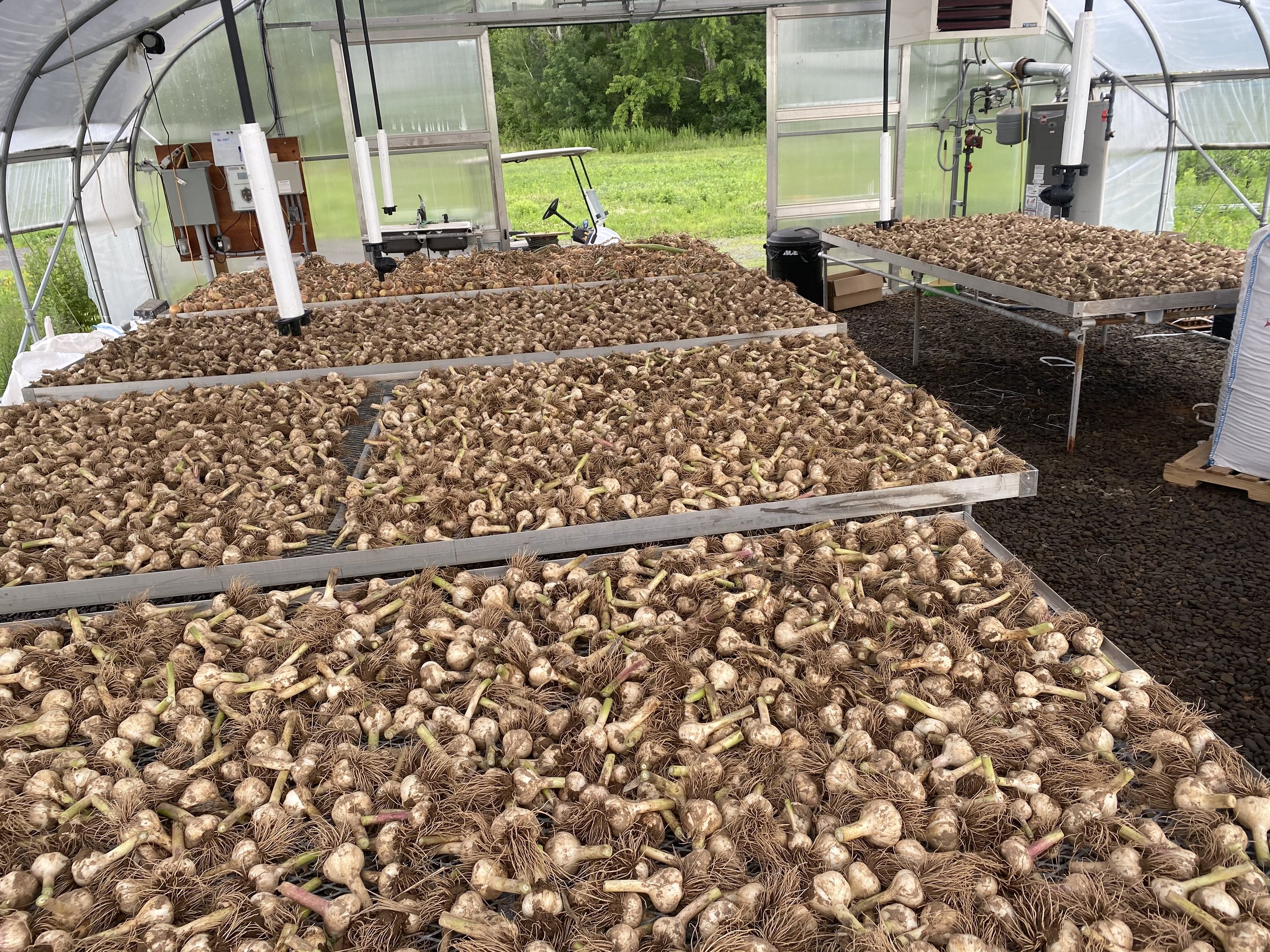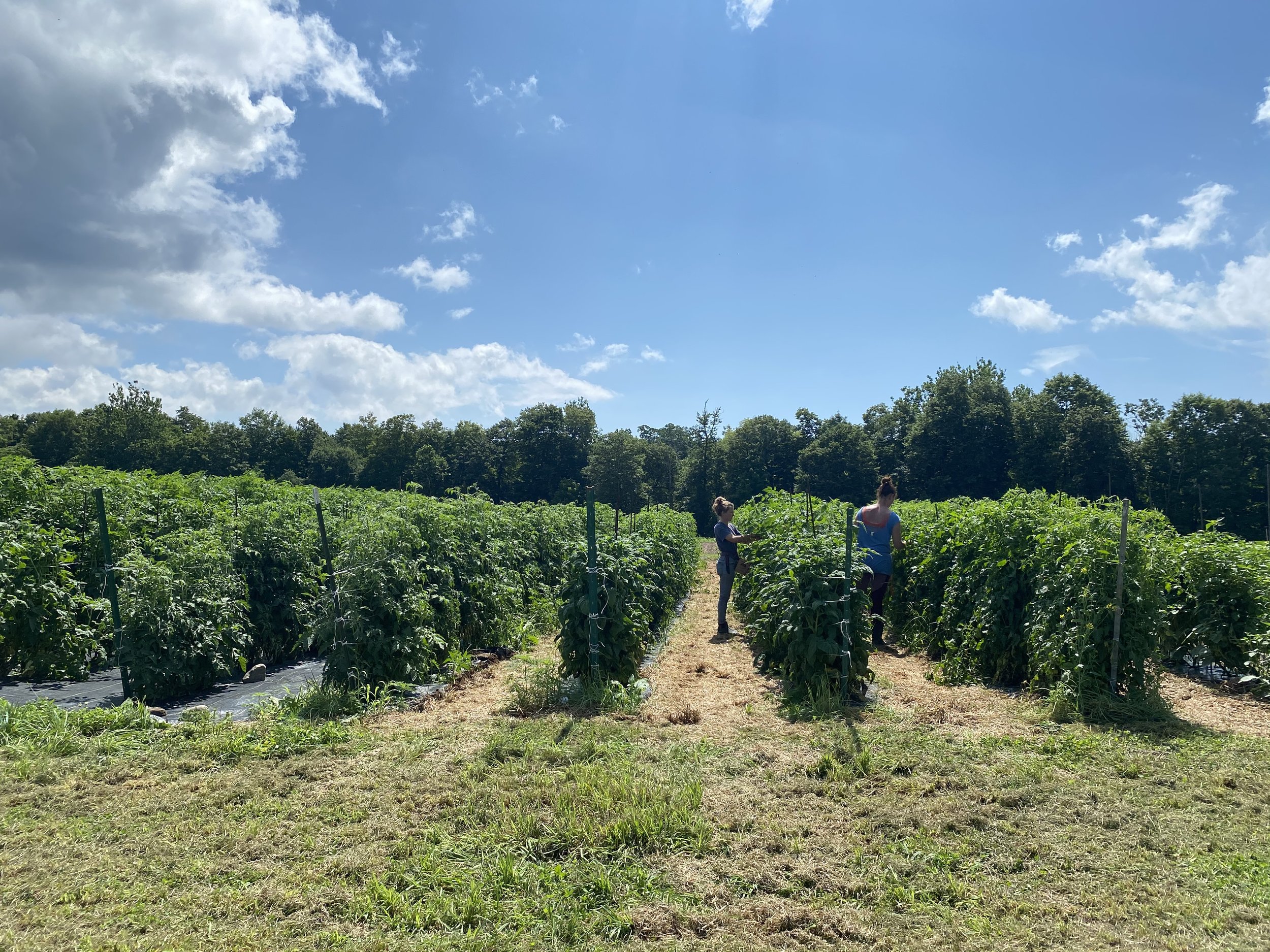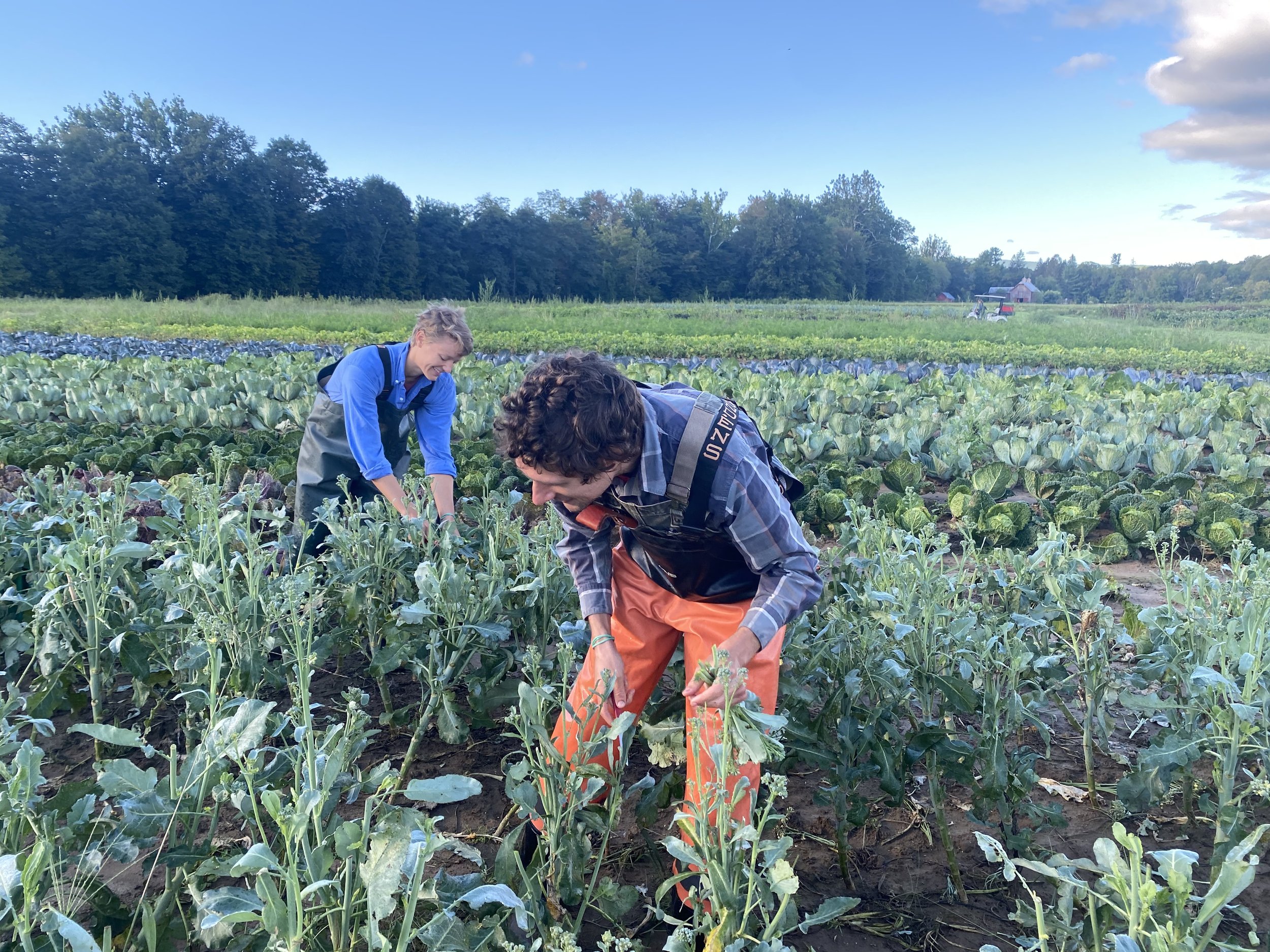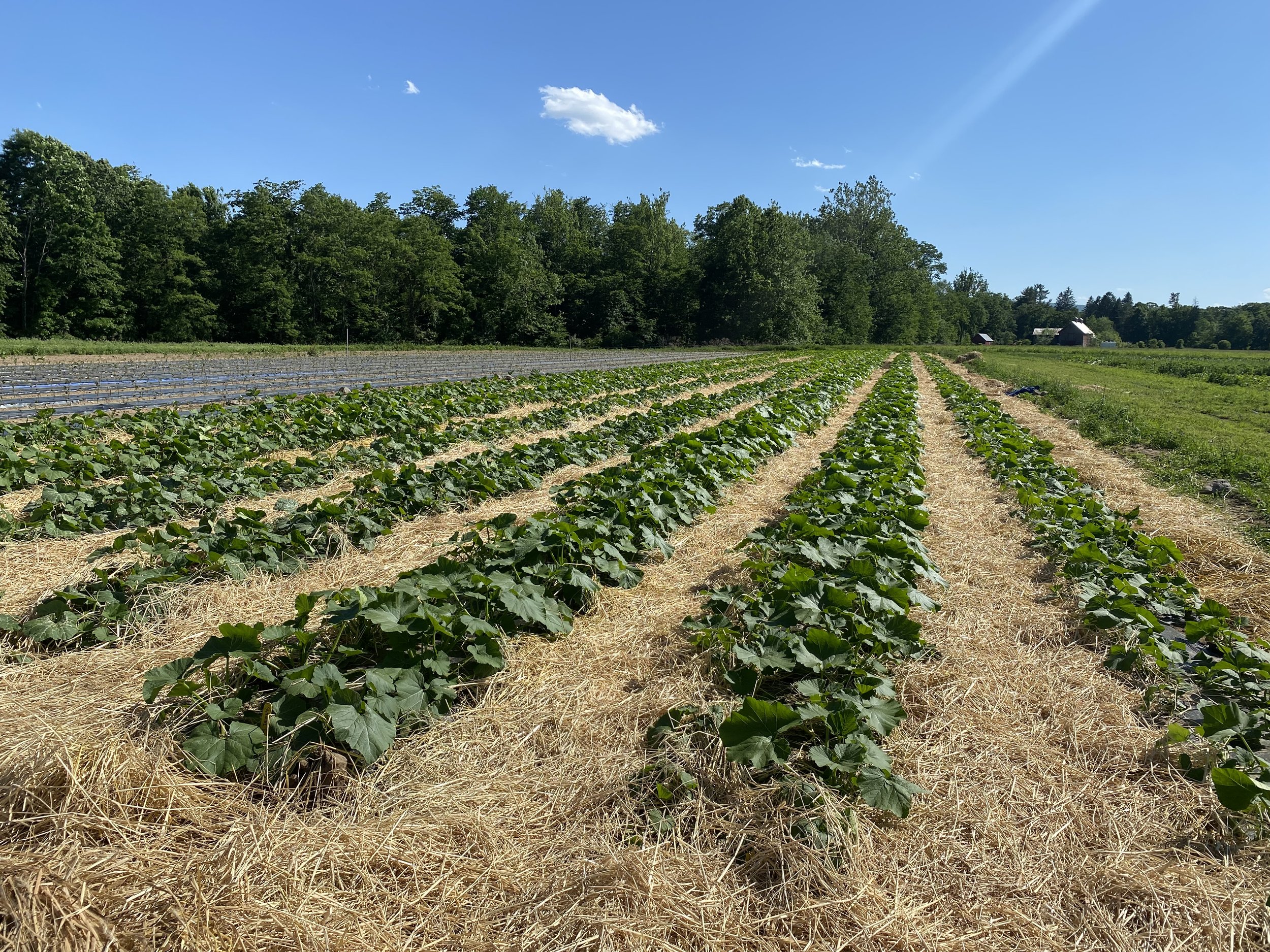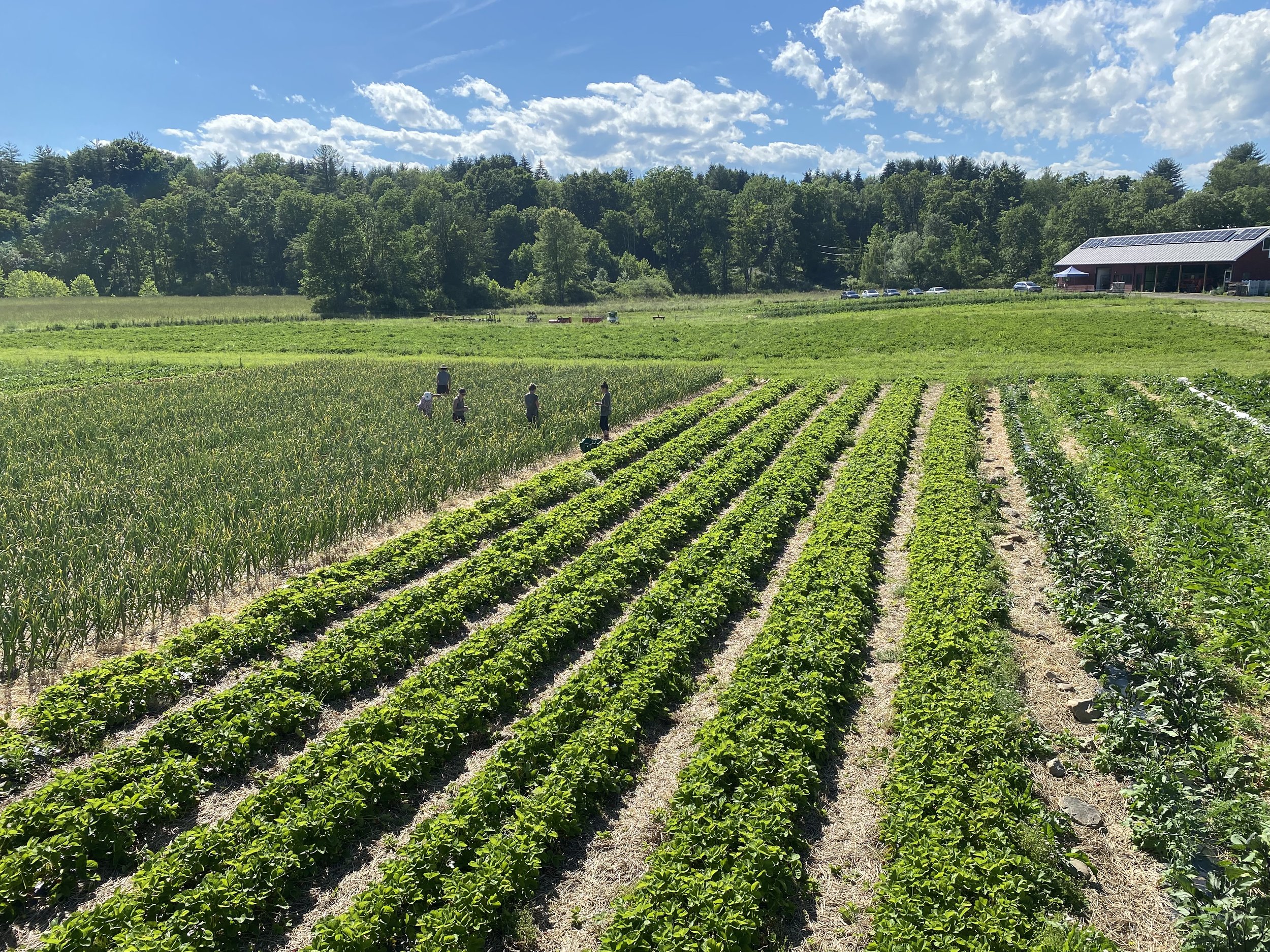Farming Practices
Kathleen taking spring soil samples.
We manage our farm with an understanding that the soil and ecosystem is the basis for the food we produce.
We fix carbon in soil through cover crops and rotation. Over the past 7 seasons our average field reading has gone from 1.7% organic matter to 1.8% organic matter. We are hopeful that with continued effort we will see that number climb over the years.
We protect and enhance biodiversity through a diverse network of crops, cover crops, grass lanes, wild areas and extremely minimal spraying.
We grow and sell vegetables locally therefore displacing carbon emissions from transport while connecting people to land.
Cover Crops
Red Clover as a multi-year break from vegetables
We rely heavily on cover crops and crop rotation to improve soil health and reduce weed pressure. Cover crops either fix nitrogen, produce lots of organic matter to cycle nutrients from deep in the soil back to the soil surface, provide nectar for pollinators, or cover the ground quickly to outcompete weeds. We usually try to mix multiple species together for the additive benefits. Crop rotation lessens the impact of pests and diseases and prevents depletion of any one nutrient in the soil.
Summer cover crop mixes including sorghum sudan, cowpeas, sunflower, crotolaria, buckwheat in center. These mixes are planted as soon as spring and earlier summer crops are harvested.
Each year we try to keep half of our fields in vegetable production and half in cover crops. This gives us the ability to rotate our vegetables through different fields each season. We use various cover crops for different purposes and timings with the goal of having a living cover on the soil as much as possible.
In Fall most of our fields are in cover crops like oats and peas, austrian winter peas, and rye.
Rye and Austrian winter peas are fall planted in September / October after winter squash and sweet potatoes and come back the following spring to produce big biomass.
Yellow Blossom Sweet Clover flowers provide great nectar.
Honey Bees and Pollinators
We have around 9 hives of honey bees on our farm and we love to see the interplay of producing cover crops, vegetables and honey all together. The cover crops feed the soil, bees, and other pollinators. The soil feeds the vegetables. The flowering vegetables feed the bees and the bees help increase yields of certain vegetables. There is nothing better than lying in a bed of yellow clover while listening to the sounds of thousands of bees and thinking we did something right.
Honey bee hives on the farm
Pest Management
We manage pests first through cultural practices including rotation, variety selection, and netting. We scout to find pests or damage so that if we need to spray we do it when the pest is most vulnerable. We always select the least harmful product available and we only use materials certified by the Organic Materials Review Institute (OMRI). We spray a very small percentage of our produce, using environmentally friendly products, like Bacillus thuringiensis. In 2023 we applied entomopathogenic nematodes across the farm which are tiny beneficial organisms that kill some of our major pests like wire worms and flea beetles.
Irrigation
We use both drip irrigation and overhead sprinklers, drawing water from the Rondout Creek and our well. We are lucky to have plentiful water in our region, but climate change is resulting in more frequent high rainfall events which can make things difficult for vegetable farmers. This is because we need to be precise about timing for certain field activities like planting and cultivation, and this is impossible when the soil is too wet. Too much rain can also make disease conditions worse.
High Tunnels
We have built 3 high tunnels and 4 caterpillar tunnels which are important to us for both summer and winter production and as a climate change adaptation strategy. In summer we plant tomatoes and cucumbers to protect them from high rains and extend their season. Then in Fall we flip tunnels to plant hardy winter greens.
Feel free to visit or contact us with any questions you have!


